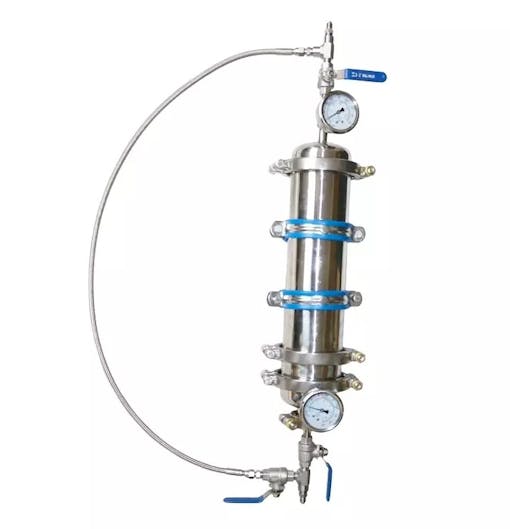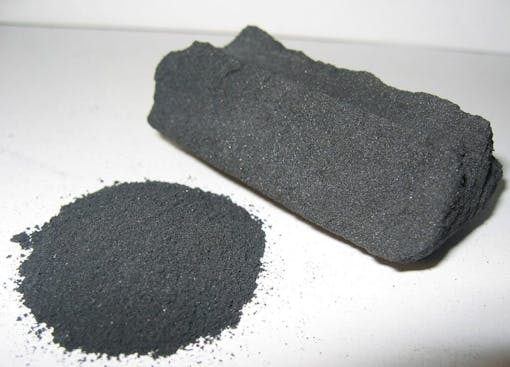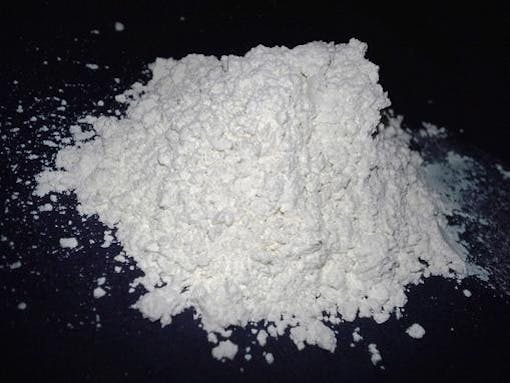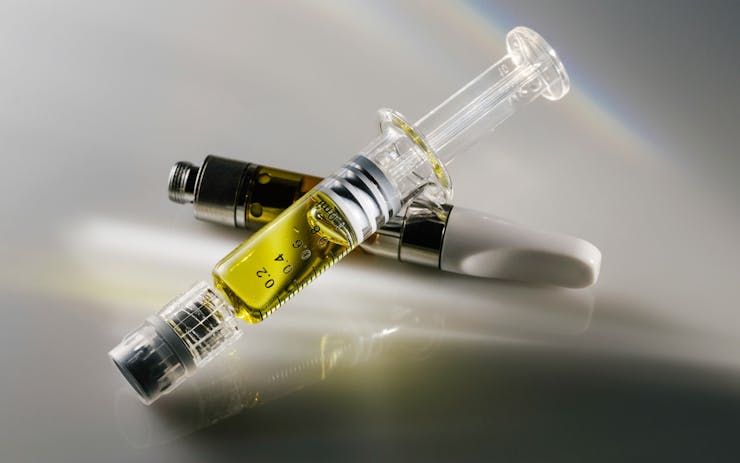“Gold is good” used to be the conventional wisdom when it came to buying cannabis extracts, but not any more.
The rise of new ways of making hash, as well as cleaning up dirty hash, mean that the old tricks don’t always work. Thanks to ‘color remediation column (CRC) technology’ or ‘CRC tech’ or ‘CRC’ for short—the color of an oil extract is no longer a guarantee of its quality or source.
This new post-extraction process allows hashmakers to dramatically lighten the color of marijuana oil, as well as remove nasty odors, and even pesticides.
Like any new technology, CRC has sparked a controversy. Some claim it’s safe, and just another way to purify low-grade cannabis oil.
Others say it amounts to fraud: it makes low-grade, dirty distillate look like top-shelf live resin. Safety data is limited, and testing for CRC contamination is missing—even in legalization states.
What is CRC tech?
CRC tech stands for color remediation column technology and it applies mainly to butane hash oil, a popular type of marijuana extract.
Many legal and illicit hashmakers now use a ‘color remediation column’—often a steel cylinder (column) packed with a filtration media like sand—during extraction to filter impurities. CRC changes a low-grade hash oil’s color from almost black, or dark brown, to light gold, or even white.

Use of CRC tech is both prevalent and controversial, it seems.
- States with legal cannabis programs generally don’t require disclosure of CRC tech use.
- Labs generally aren’t required to test for CRC media contamination.
- And just as sneakerheads avoid buying some fake “Abibas”, serious hash heads don’t want to get conned into buying some live resin that’s not actually live.
Multiple color remediation column technologies
CRC tech isn’t one thing—it’s an entire class of post-extraction processing equipment and methods that expands by the day.
There is no one size fits all for CRC and a wide range of substances can be used for filtration including:
- activated charcoal,
- bentonite clay,
- Magnesol,
- diatomaceous earth,
- and silica.
Often a combination of various filtration media will be used, sometimes in multiple steps.
Marcus Moates, the owner of Nature’s Lab Extracts, has been making extracts in the legal market since 2008. He’s worked in California, Nevada, and Oklahoma.

Moates said that CRC is a viable tool. It lets extractors take out the green-brown plant pigment chlorophyll, “and other things you get using lower-quality material.”
He was clear that “there is no standard” for CRC, and everyone has their own method of CRC right now.
CRC is more than just color
Even though it’s called a ‘color’ remediation column, the gear is not exclusively used for color remediation, experts told Leafly.
Some manufacturers may use it just to lighten up the color of an oil. But industry experts speaking on background said CRC is even more commonly used to scrub out any residual pesticides, off-flavors, or even byproducts produced from processes such as converting CBD or ∆9 into ∆8-THC synthetically.
Who uses CRC tech?
In addition to everyone having their own method, CRC is quite literally everywhere.
“I don’t think there are many out there who aren’t using some CRC,” said Moates, estimating that over 90% of the national market used some elements of CRC.
“In Oklahoma I have been to hundreds of labs and they all CRC,” and in Nevada “it was like pulling teeth to get people to stop using CRC.”
Other than NLE, Moates could think of only one other big company that doesn’t CRC.
How old is CRC tech?
Even though public awareness of CRC is just blowing up now, serious industry heads have known about it for years.
Victor Pinho is a longtime activist and a Co-Founder of Bay Area-based Emerald Farm Tours. Pinho first heard of the method in 2016.
“Extractors realized they could run oils through a series of media which could lighten the oil.”
Moates corroborated Pinho’s timeline, “CRC started going mainstream in 2017 but there were already people using it but no one talked about it.”
How safe is CRC hash?
Thanks to online discussions on places like reddit.com, some folks are googling ‘can CRC wax kill you?’
The research and safety data on CRC tech products certainly remains thin.
We have some long-term studies on miners of bentonite clay and diatomaceous earth. Workers in caves would breathe in a high concentration of this fine sand daily for years and toxic amounts were quantified. It can cause respiratory damage if inhaled, sellers state. So can silica gel.

GRAS label not relevant
Lots of CRC materials are labeled ‘generally recognized as safe’ by the Food and Drug Administration. But ‘GRAS’ applies to food products meant for stomach lining, not inhalation products burned and sprayed on lung tissue.
Some GRAS materials like bentonite clay have been used in processing food oils for years. But the FDA has also issued warnings about specific brands whose clay was found to have elevated lead levels.
California’s super-strict lab testing requirements would catch any heavy metals in legal pot products. CRC media contamination might also fail visual inspections.
CRC media not tested
But regulators do not require a test for CRC media.
Moates said it is “interesting” that CRC has been mass-adopted without there being a test in place. “No labs are testing for the substances inside the filtration media yet,” he said.
Pinho was supportive of CRC, but also stressed the importance of testing.
“At the end of the day, if it passes testing and there isn’t anything harmful to people, it is just making a cleaner product.”
Industry expert Victor Pinho, Emerald Farm Tours
“It’s just another tool of remediation,” Pinho told Leafly, adding that the sulfur from a pesticidal sulfur burn can be removed if you run the oil over charged copper balls.
“At the end of the day, if it passes testing and there isn’t anything harmful to people, it is just making a cleaner product,” he said.
Clean CRC hash is possible
On the other hand, experts say any decent hash lab can remove CRC media from an oil with simple filtration with a .45 micrometer filter.
Moates echoed Pinho, saying “I know there is a lot of concern about the media itself getting into the finished product but as long as you are passing everything through a fine micron screen nothing will get through.”
Still, due to a lack of testing for CRC media in either the illegal or legal cannabis markets, the possibility of contamination is always present.
CRC’s main harm is less terpenes
Pinho noted that, in absence of evidence showing CRC media could end up in extracts, the main drawback to CRC was that it removes terpenes. But if someone is running a distillate, that doesn’t matter, since it is already terpene-free.
He did say that if CRC is found to be harmful in some way “it should be disclosed,” but at present, there is no harm that we know of beyond a reduction in terpenes.
How to detect CRC wax
A big question people want to be answered is how to tell if something they just bought was made using CRC. Experts gave us some tips.
For one, CRC tech products are usually found in BHO carts and dabs. By contrast, lots of folks are gravitating to natural, or solventless extracts—like bubble hash, kief, rosin, and live rosin.

Sniff for synthetic smells
Veteran cannabis journalist Jimi Devine says that, “the most dead giveaway is a lime-aid smell,” since CRC will strip out some of the terpenes, many extractors will replace them with non-cannabis terps.
“I want to start a Margaritaville CRC line for custys,” Devine joked. Custy is a slang term for a clueless customer.
Moates also commented on the flavor aspect, saying that, “If you put too much CR material in a column it is easy to overdo it and it can taste like chemicals.”
Flag unnatural colors
Rather than focusing on what to sniff for, Moates focused on what to look for. He said that “a uniform white color is a dead giveaway that something was made with CRC.”
Mature trichome heads naturally will have an amber color, Moates explained. Even high-quality extracts will have a slight yellow tint.
The bottom line is it’s harder than ever to eyeball quality. And it’s always worth asking your budtender, and hash manufacturers more about what’s going into your carts, and thus, your lungs.





